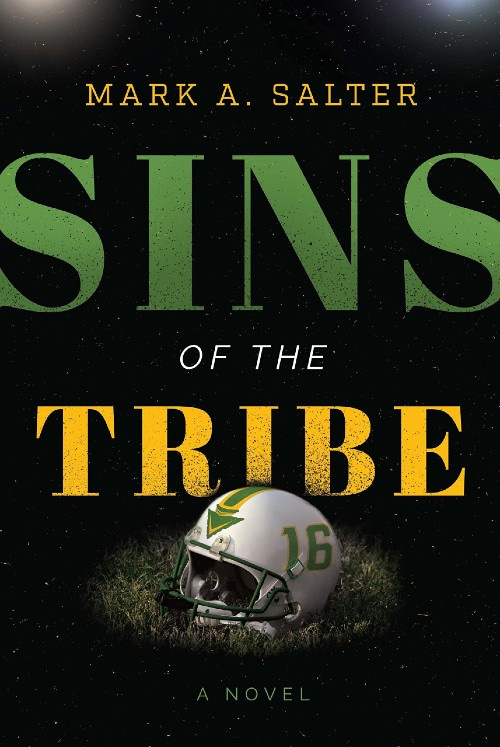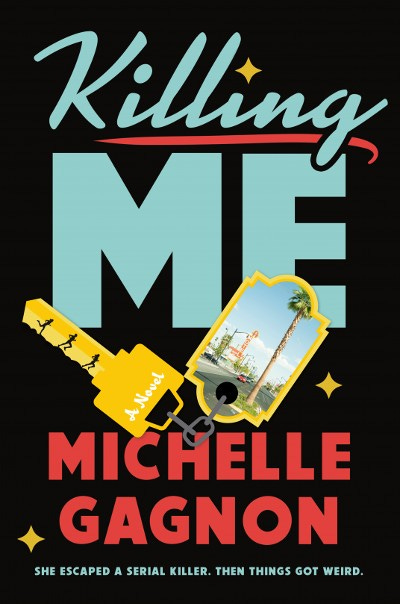Hi.
Well, I made it through to the Other Side, surgery-wise. I’ve just completed 2 weeks post-op recovery which have been a mashup of “omg I feel great” and “holy crap this hurts.” But I’m going out on a limb today, day 15, to say that I am actually regaining my sense of myself as not-an-invalid. Although I realize this is just the beginning of course, and eagerly await the first of no-doubt many terrifying medical bills and insurance claims. Wish me luck in this (insurance arm wrestling) stage.
In the interim I thought I’d share a little something about rosé wine. I have re-discovered it this summer and thought I’d bring a bit of educational nonsense about it with the help of one of my favorite sommeliers, Brian Hay, for you along with a couple of book reviews. Let’s dive in, shall we?
Let’s start with a few basics. Firstly, rosé is not a grape. It is a style of wine, different from reds and whites. To back up even further, you should know that most grapes, with very few exceptions create a clear or colorless juice—even grapes like cabernet sauvignon. The color of the resulting wine comes from something called anthocyanins, which are water-soluble pigments that will produce red, purple, blue or black colors depending on their chemical make up. Think “blueberries” and “blackberries” and you’ll get an idea of an anthocyanin-rich food. In wine, anthocyanin reacts with other components like tannins, acetaldehyde and pyruvic acid to form the pigment color. The process of maceration—where in the skins, seeds, and stems from the grapes are soaked in the clear juice—draws out all of these compounds, including the color.
Oh, and yeah, that whole grape stomping thing? That is technically a maceration process, albeit a kind of icky one. Oh! Oh! Also, fun fact: lambic beers, absinthe, and Campari use maceration as part of their process.
Whew. Okay. So now that we know enough about the process stuff, it stands to reason that one way to make a rosé wine is to only allow the maceration (exposure of the clear grape juice to the skins) to occur for a few hours or days, as opposed to the time it takes to create a deep red cabernet, which allows the skins and whatnot* to remain in the juice all the way through fermentation. There are a couple of other ways, according to Our Favorite Wine Guru, Brian Hay. “You can blend a red and white wine, or you can use the bleeding process.”
I mean, bleeding? Really.
Relax, it’s a French term and process called saignée which takes 10% of the macerated red wine juice out, puts that in a separate tank for fermentation. This gives you both a nice rosé in one tank and a red wine that’s 90% of the juice with 100% of the skins and whatever else* that will result in a nice, strong, definitely not rosé.
“Rosés get a bad rep, for no reason other than the fact that some of the more mass-produced white zins and other sweet, pink-colored wines are considered to be of low quality. But places like Sutter Home have produced these sorts of palate entry-level wines for years with much success so I certainly never fault them for that,” says Brian. And really, I get this, on a beer level. I gave up judging people on what they drink years ago. Producing a large amount of booze at the same level of quality every time (see: “the Bud you drink today tastes exactly the same at the Bud you drank three years ago”), selling it to the masses and continuing to make money doing so takes skill, organization, and committed fermentation specialists. This in turn makes money that can be spent on large advertising budgets. No arguments from me on that.
Back to the process for a minute now that we have re-established our judgement-free zone. You can make a rose wine from pretty much any grape. Brian is of the opinion that a grape that is low acid and tannin levels makes for the best option—pinot noir, grenache, and zinfandel being among them. In fact, the lower the acid, the dryer the result. Many French versions are crisp, and “off dry” which is wine talk for “not sweet but not dry either,” which is Brian’s preference for this style. He’s not inclined to give us specific recommendations because quality varies depending on if you want your rosé sweet or not, not to mention where you live and what wines are available to you, but he will say that if you can get your hands on one made in Oregon, you will be a happy drinker. If you prefer French, look for rosés from the Loir Valley, Tavel (Southern Rhône), and Provence.
“When it comes to rosé wines you have to keep an open mind and listen to your local expert. Not all rosés are available in every part of the U.S. so relying on your wine steward or wine shop owner is key.”
Decide if you want it sweet or not, too because that’s where large variations occur, along with color. Remember when we talked about how any wine’s color (red, white, otherwise) comes not from the juice of the grape but from adding the skins and stems back in to allow them to soak in that juice? So the light pinks to salmon to near fuschia you get when you’re facing that enormous shelf full of rosés is a direct result of which skins were used and how long they sat in the juice. Therefore, it stands to reason that there will be a wide variety of color on that pink spectrum.
Personally, I can highly recommend Rendezvous Rosé from Carol Shelton Winery. It is available in most markets, so when you’re shopping and want a delicious, deep pink option made by bleeding half of the “pink” juice off of red Carignane grapes a full three days after crushing them and fermenting the result cold like a white wine, ask your local wine shop owner to find that one. The process gives the Rendezvous not only a compelling color in the beautiful bottle (yes, I am a sucker for packaging) but also a distinct strawberry fruitiness that is delicious served cold. I also tried and can recommend a solid Michigan made rosé—the Etcetera Rosé from Chateau Grand Traverse made from a combination of pinot noir, gamay noir, merlot, and cabernet franc.
A word about “White Zinfandel” (a.k.a. “Cougar Juice” in Texas according to our aforementioned wine expert Mr. Hay). First off, it is a rosé, one made from Zinfandel grapes. It is very sweet. It is also very popular. That does not make it bad (or good), but simply a fact. Many people new to wine start on the sweet end of the spectrum as a gateway and end up elsewhere. Some don’t. No judgement.
As for pairings, for best results, Brian recommends keeping things light to match the style of rosé wines. Chicken, fish, poached or grilled with some peppery greens would make a lovely summer meal with your choice of sweet or off-dry rosé. On the other hand, you might consider going all in with something…else. “One of the best meals I’ve had is a local bbq brisket, consumed at the Fall Creek Vineyards, in the hill country of Texas, alongside their 100% grenache (grape) rosé.”
Just in case you were confused about what food to pair with what wine…go with what you love. I mean, just last night, after a long day of wondering if I would ever feel better again, I consumed a delicious, creamy yet delightfully perfect rice crispy treat alongside a pinot noir. Take that wine snobs.
Okay, I consumed three of them, and the whole bottle.
Enjoy life. Drink more wine. That’s the gist. If you like it pink colored, I hope you gained some assistance from this, your monthly column dedicated to helping you drink better and judge less.
I shall dive into the concept of “orange wine” in another scintillating episode…once I wrap my head around it.
*the terms “whatnot” and “whatever else” are used as Serious Winemaking Terms only here, and nowhere else. It is not recommended that you use them too much lest you be considered a wine snob.
As for books, allow me to recommend the following:
Sins of the Tribe, by Mark Satler
This book was published July 12, 2022.
As a sports fan generally, and the parent of a former college athlete, I was intrigued by the concept of "tribalism" as reflected by the game of football.
What I didn't expect was an ambitious and well crafted story about two young men, whose set up in the first chapter is a bit clunky, but is overcome by incredible storytelling for the rest of the book. What we experience through the eyes of a young man "almost" talented enough for college as a quarterback, as he become the holder for his more talented but on the autism spectrum step-brother (a kicker) is both emotionally crushing and enlightening in equal measure. The macro story about toxic cultures in college sports (which I have experienced first-hand) is artfully explored via the microcosm of a single, fictional football team in a way that is worth every page read.
I'm a fan of college and pro football which makes me feel guiltier every season. This book, while not exactly helping me feel better about my fandom, does explain it to me in a fictional way that sort of snuck up on me. I got lost in the storytelling, the football game descriptions, and especially the Professor character and before I knew it I was cheering for Wally and Henry, who move from abusive home lives straight into abusive situations, masquerading as "coaching." and "supporting the Tribe."
Football as an analogy for life has been done before, but never in such a thought-provoking or disturbing way. I thank Mr. Salter and the Professor for this explainer: "Tribalism is the strongest dynamic in humanity; stronger than morality, kindness, rationality, even sovereign constitutions – unless of course a nation defines its tribe by that constitution."
Many thanks to Netgalley for this review copy.
And a book that’s not coming out until 2023 but you MUST put on your radar:
If you are a fan of genre mashups then this book is for you.
No, seriously, it's amazing but you have to be willing to consider a chick lit cozy thriller with a side of true crime with some Sapphic romance, but I highly recommend that you do so, right away.
Killing Me is one of the most creative books I've read in a while. I loved how real every character was, regardless of their over-the-top nature. There's everything from a queer female con artist, to a hot, blond serial killer to a bi sex worker, with a couple of femme fatale noir types who own hipster running to seedy, off the strip Vegas hotels for good measure.... and a lot in between.
The novel's structure is energetic and fast-paced, dropping you straight into the story when our MC (the queer, female con artist) is kidnapped and being prepped for demise by a serial killer (not the hot blond one, either). From Tennessee to Las Vegas to LA, the plot moves fast and convincingly in first person POV, and contains some of the cleverest internal dialogue I've read in a long time. My only concern at the end was for our intrepid MC to quickly cash in all that crypto for something more stable.
5 enthusiastic, read-it-in-a-day stars.
Stay healthy, friends.
xoxo
Liz





